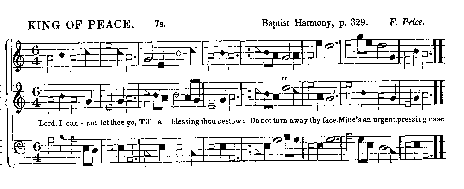What are the Shapes and Why?
first published in Prairie Harmony, Volume 2, #1, January 1991

The problem that these resourceful Americans were attempting to solve was one that even today bedevils music educators--how to teach a singer to sight sing written notation. Conventional music notation requires that a singer perform continual mental gymnastics in order to convert the staff and key signature plus the note value into a correct scale degree. This difficulty is not really improved with the conventional solmization systems such as do re mi which are aural not visual drilling techniques. The beauty of all the American shape note strategies was to add additional visual information to conventional music notation to reinforce the aural benefits of the solmization practice. The singer can thus recognize the location of the whole step or half step intervals automatically without regard to staff or key signature calculations. This may seem a trifle abstract if you have never taken a sight singing course, let me assure you that the results are decidely practical. At the introduction of the new songs for the 1991 Revision of the Denson Sacred Harp, 350 shape note singers ploughed through ~63 unfamiliar pieces with nary a practice run. It was a spectacular example of sight singing by "untrained" musicians.
Keith Willard
 The problem that these resourceful Americans were attempting to solve was one that even today bedevils music educators--how to teach a singer to sight sing written notation. Conventional music notation requires that a singer perform continual mental gymnastics in order to convert the staff and key signature plus the note value into a correct scale degree. This difficulty is not really improved with the conventional solmization systems such as do re mi which are aural not visual drilling techniques. The beauty of all the American shape note strategies was to add additional visual information to conventional music notation to reinforce the aural benefits of the solmization practice. The singer can thus recognize the location of the whole step or half step intervals automatically without regard to staff or key signature calculations. This may seem a trifle abstract if you have never taken a sight singing course, let me assure you that the results are decidely practical. At the introduction of the new songs for the 1991 Revision of the Denson Sacred Harp, 350 shape note singers ploughed through ~63 unfamiliar pieces with nary a practice run. It was a spectacular example of sight singing by "untrained" musicians.
The problem that these resourceful Americans were attempting to solve was one that even today bedevils music educators--how to teach a singer to sight sing written notation. Conventional music notation requires that a singer perform continual mental gymnastics in order to convert the staff and key signature plus the note value into a correct scale degree. This difficulty is not really improved with the conventional solmization systems such as do re mi which are aural not visual drilling techniques. The beauty of all the American shape note strategies was to add additional visual information to conventional music notation to reinforce the aural benefits of the solmization practice. The singer can thus recognize the location of the whole step or half step intervals automatically without regard to staff or key signature calculations. This may seem a trifle abstract if you have never taken a sight singing course, let me assure you that the results are decidely practical. At the introduction of the new songs for the 1991 Revision of the Denson Sacred Harp, 350 shape note singers ploughed through ~63 unfamiliar pieces with nary a practice run. It was a spectacular example of sight singing by "untrained" musicians.